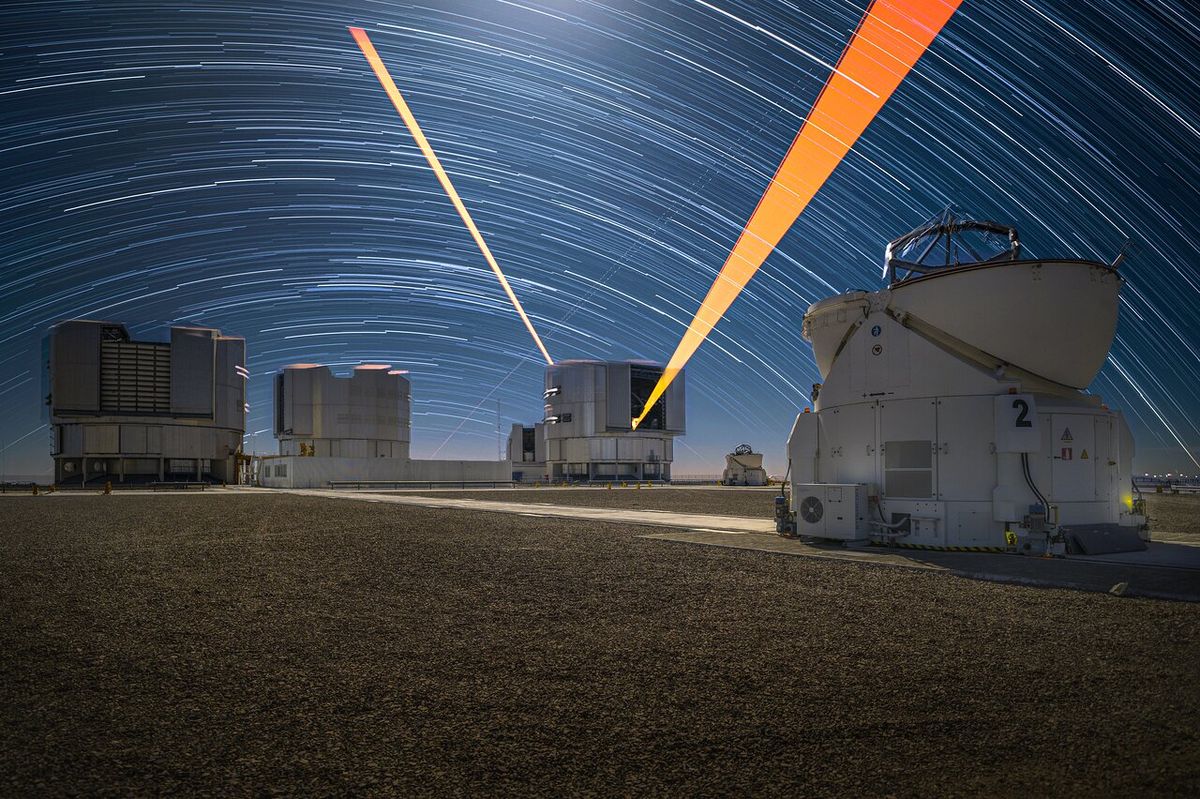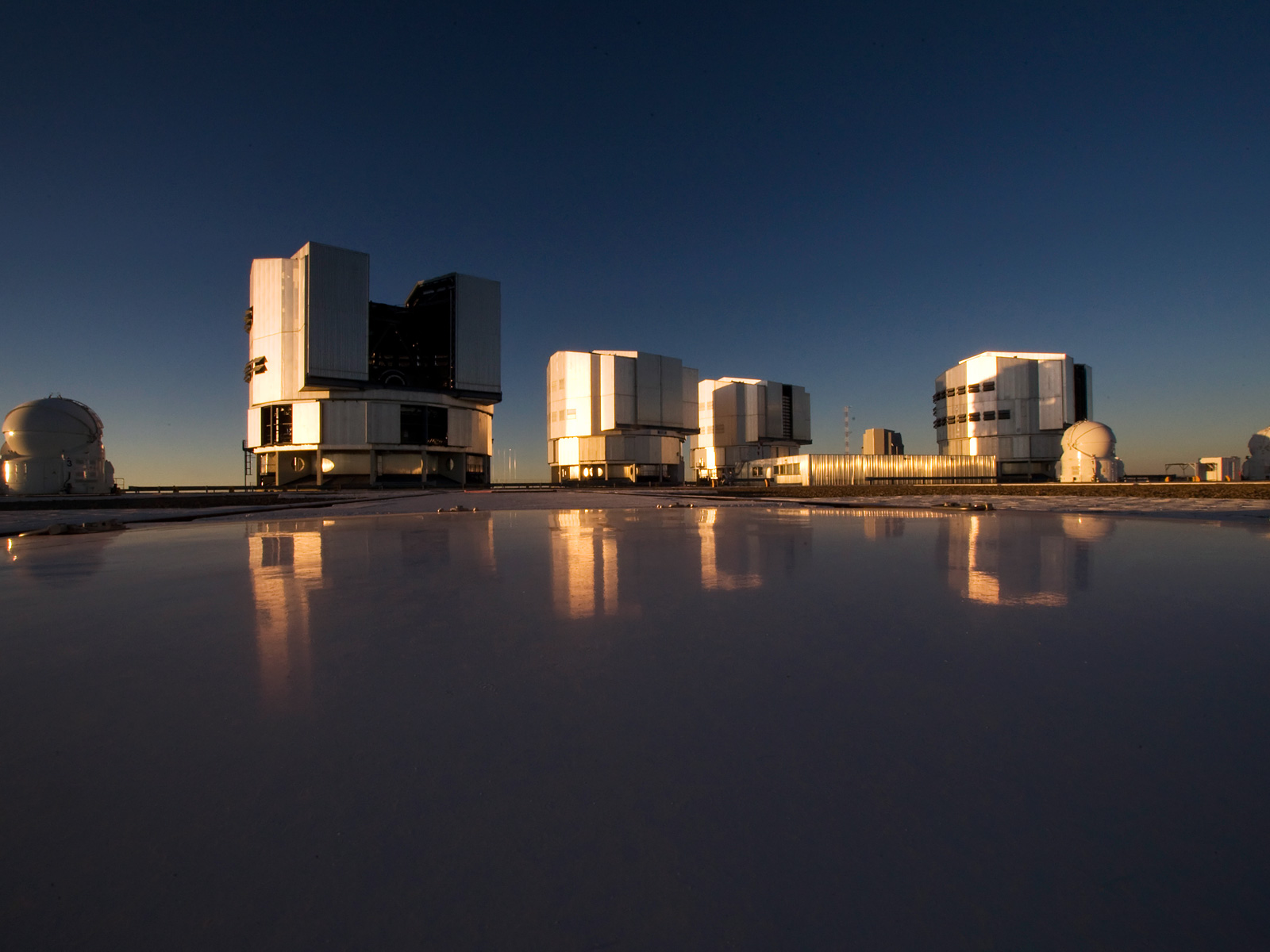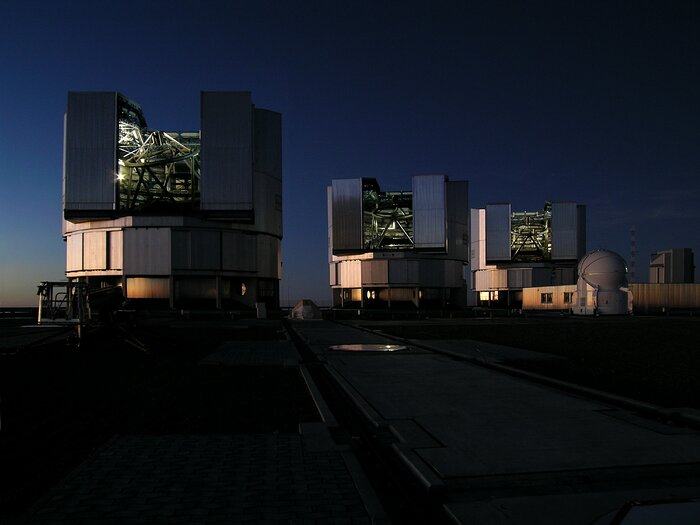Lasers cut through star trails in beautiful photo from the European Southern Observatory [View all]
By Samantha Mathewson published 3 days ago
In the new image, two laser beams are also seen decorating the night sky.

A swirling, dynamic, long-exposure image of Paranal Observatory at night. (Image credit: ESO/A. Ghizzi Panizza)
The European Southern Observatory (ESO) shared a beautiful new image of stars trailing across the night sky. It was taken at the ESO's Paranal Observatory, located in the Chilean Atacama Desert. The observatory is home to the Very Large Telescope (VLT), which consists of four Unit Telescopes and four smaller, movable Auxiliary Telescopes, like the one in the foreground of the image on the right.
Astronomers used a long exposure technique in which the night sky is photographed over several hours, capturing the movements of stars as they travel overhead. This creates a dazzling trailing effect, where starlight appears to arc over the observatory’s ground-based telescopes.
Two bright orange lasers are also seen beaming out of one of the Unit Telescopes. These laser beams, known as laser guide stars, are used to correct the distortion of starlight caused by Earth's turbulent atmosphere, according to a statement from the ESO. The beams are pointed in opposite directions because the long exposure technique took several hours to complete, during which the telescope moved to observe different targets in the sky, ESO officials said.
A laser guide star creates an artificial star by shooting a laser beam into the sky, which excites sodium atoms in the upper layer of the atmosphere and causes them to glow like stars. This, in turn, provides a reference point for ground-based telescopes, enabling them to cancel out the effects of atmospheric turbulence and create a sharper image of the sky.
More:
https://www.space.com/star-trails-european-southern-observatory-photo
















